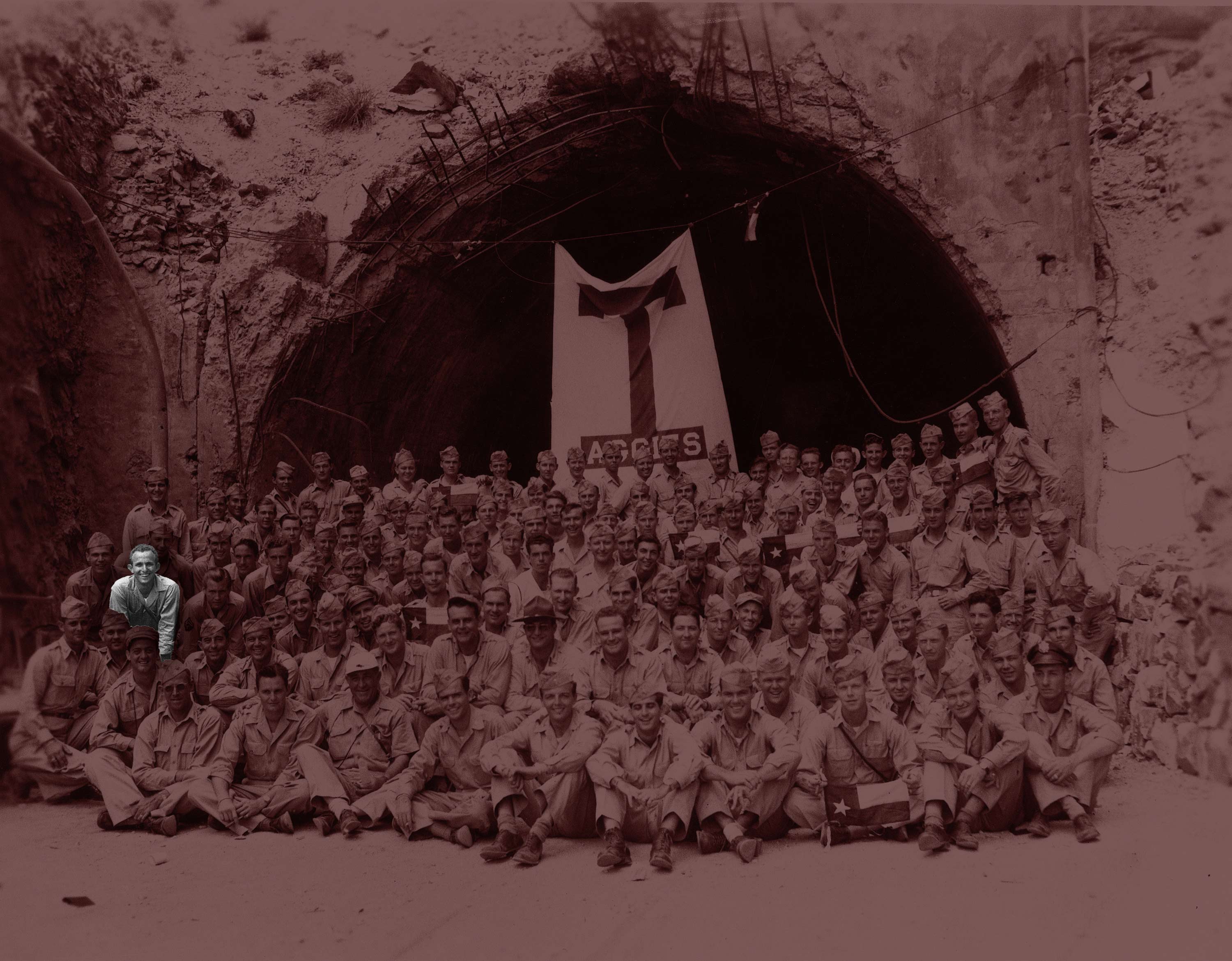
On Easter Sunday, April 21, 1946, a group of Aggies assembled at the mouth of the Malinta Tunnel on Corregidor Island for an Aggie Muster to honor their fellow Aggies who had fallen during World War II. With a bed sheet serving as an improvised Aggie flag, 128 men stood together, paying tribute to their fallen brothers.
This profound ceremony embodied the resilience of the Aggie spirit and reinforced Texas A&M’s enduring tradition of loyalty and remembrance through Muster, a solemn tribute to those who made the ultimate sacrifice.
Gerry Grogin, born in 1926 in Bryan, Texas, is not only a living testament to the enduring spirit of Texas A&M University and the profound impact of the J. Mike Walker ’66 Department of Mechanical Engineering, but he is also the last surviving participant of the legendary Corregidor Island Muster. His legacy symbolizes the resilience and unity of Aggies.
Growing up just a few blocks from Main Street in Bryan, Gerry’s roots in the local community and Texas A&M run deep.
Gerry’s connection to Texas A&M began long before his time as a student. His father and uncles attended Texas A&M. His uncle, Phil Groginski, graduated in 1914 and then served as a machine gun officer in the 144th Infantry during World War I. Phil was also credited with starting the Kilgore Oil Field, a notable achievement that undoubtedly inspired Gerry’s own aspirations.
When reflecting on his time at Texas A&M, Gerry’s emotions are clear. “When I start thinking about Texas A&M, I can tear up really easy,” he admits. “Because if it hadn’t been for A&M, I don’t know if I would be around.” His words capture the profound gratitude he feels toward the institution that shaped his life.

In 1944, while still a student at Texas A&M, Gerry joined the Army Air Corps as an aviation cadet, hoping to become a pilot. However, his eyesight prevented him from fulfilling that dream. Instead, he was sent overseas as a cryptographer, a role he secured thanks to his engineering & math studies at Texas A&M.
As World War II drew to a close, Gerry’s skills as a cryptographer became less essential, and he was reassigned as a courier. It was during this time that he participated in the legendary Aggie Muster on Corregidor Island in 1946.
Upon returning to Texas A&M, Gerry initially enrolled as an aeronautical engineering major, motivated by President Franklin Roosevelt’s belief that air power was crucial to winning the war against Japan. However, Grogin soon realized that his true calling lay elsewhere and switched to mechanical engineering, a decision that would shape the rest of his career.
After graduating, Gerry took his commission as a second lieutenant, and his unit was called into action in Korea, but fortune favored him. His affiliation with the 75th Division in Houston meant his group wasn’t deployed.
After joining the reserves, Gerry started in the commercial air conditioning industry just as the field was emerging in Houston.
In 1993, Gerry joined Polar Air Corporation, where he continues to work as a project manager and engineer at the age of 98. His dedication to his profession and his longevity in the field are a testament to his passion and expertise.
Gerry’s impact extends far beyond his professional career in HVAC. As a committed Aggie, his generosity towards Texas A&M, particularly the Department of Mechanical Engineering, has been substantial. His monetary gifts have been instrumental in advancing academic initiatives and supporting future generations of Aggie mechanical engineers.
When asked what advice he would give to current students, particularly those in mechanical engineering, Gerry’s words are both wise and encouraging: “I would say to stay the course. Continue what you are doing and keep your mind open for all other avenues. Because in engineering, especially mechanical engineering, there’s so much to be learned.”